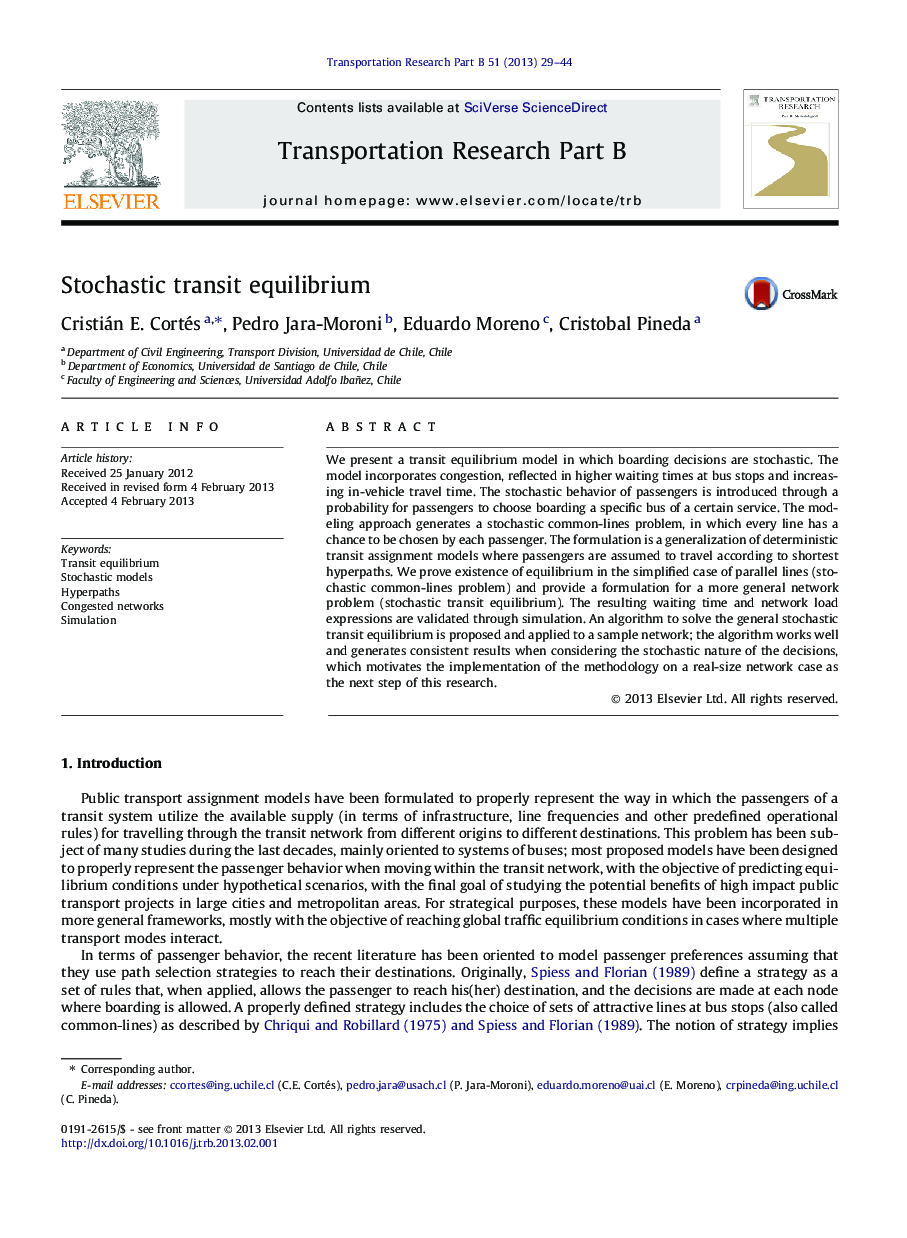| Article ID | Journal | Published Year | Pages | File Type |
|---|---|---|---|---|
| 1132235 | Transportation Research Part B: Methodological | 2013 | 16 Pages |
We present a transit equilibrium model in which boarding decisions are stochastic. The model incorporates congestion, reflected in higher waiting times at bus stops and increasing in-vehicle travel time. The stochastic behavior of passengers is introduced through a probability for passengers to choose boarding a specific bus of a certain service. The modeling approach generates a stochastic common-lines problem, in which every line has a chance to be chosen by each passenger. The formulation is a generalization of deterministic transit assignment models where passengers are assumed to travel according to shortest hyperpaths. We prove existence of equilibrium in the simplified case of parallel lines (stochastic common-lines problem) and provide a formulation for a more general network problem (stochastic transit equilibrium). The resulting waiting time and network load expressions are validated through simulation. An algorithm to solve the general stochastic transit equilibrium is proposed and applied to a sample network; the algorithm works well and generates consistent results when considering the stochastic nature of the decisions, which motivates the implementation of the methodology on a real-size network case as the next step of this research.
► We propose a transit equilibrium model with stochasticity in boarding decisions. ► The model incorporates congestion through bus capacity constraints at stops. ► The approach assumes that passengers travel according to shortest hyperpaths. ► New expressions for waiting time and loads are found and validated through simulation. ► An algorithm is proposed for stochastic equilibrium on a generic transit network.
